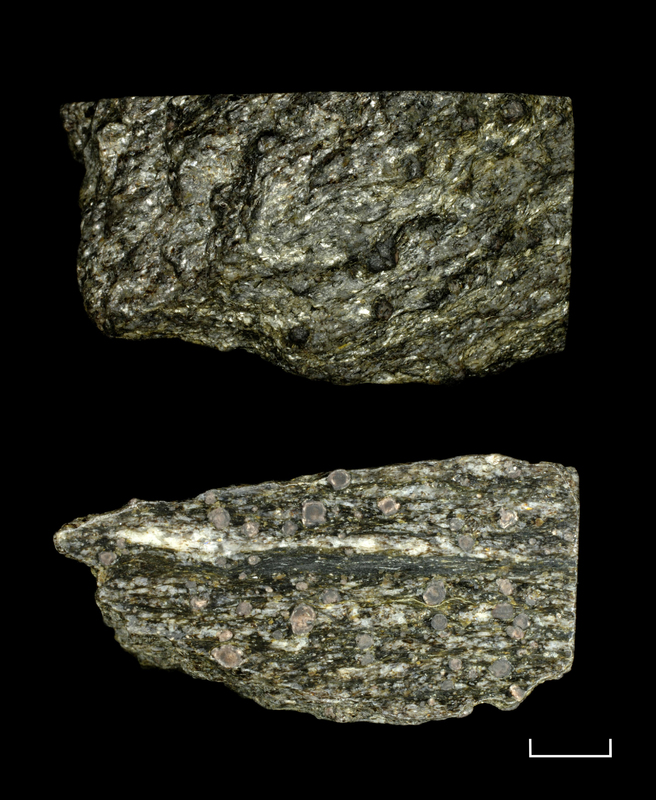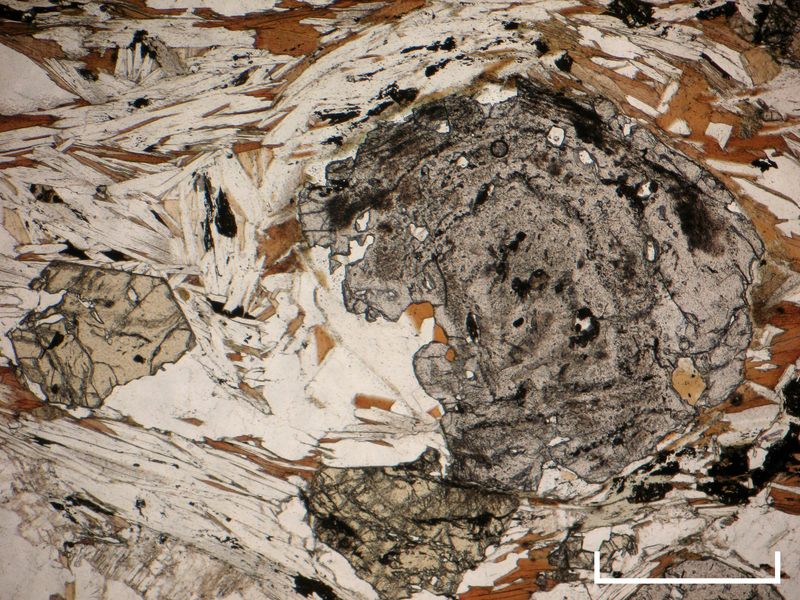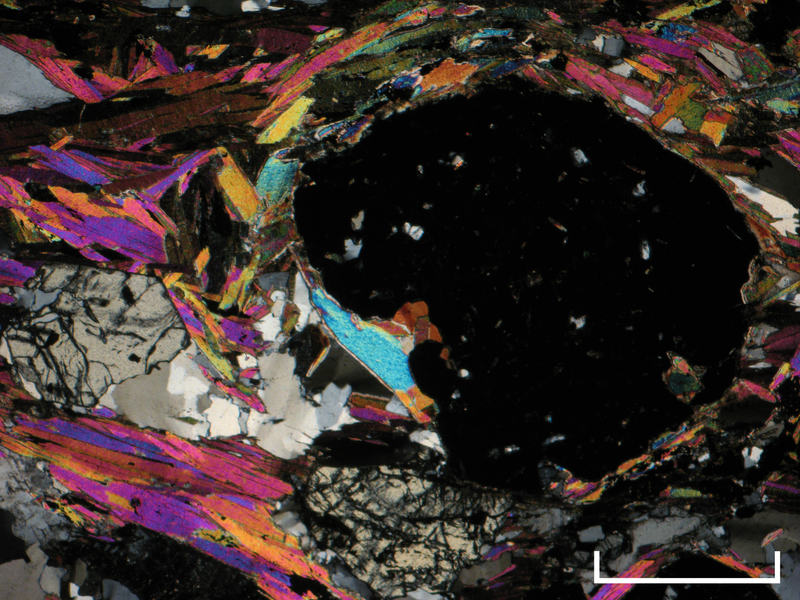- Home
- Rocks
- Type fossils
- Fossil Specimens
- Minerals
- Glossary
- Stratigraphic Chart
- Michel-Levy Chart
- Classification of igneous rocks
- University of Cambridge
- Department of Earth Sciences
- ESC Library
- Moodle
- Sedgwick Museum
- DoITPoMS
- Mindat.org
- Microfossils
- Bryozoans
- Webmineral
- Tree of Life
- CrystalMaker
- Virtual Microscope
L504 Garnet schist
Title
L504
Garnet schist
Subject
Age
Pre-Devonian
Location
Ny-Friesland, Spitsbergen
Description
Hand Specimen
Strongly developed planar fabric made up of platy biotite mica and muscovite mica grains and lenses of quartz grains. Fabric wraps around large, euhedral garnets, typically ~2mm across. Quartz, the most soluble mineral, has recrystallised at the corners of the “eyes”, in the pressure shadows of the garnets.
Thin-section
Bands of interlocking quartz grains and some feldspar (plagioclase and alkali, lamellar twinning and alteration), alternate with bands composed of needles of biotite mica and muscovite mica, about 50:50.
Quartz displays undulose extinction, and being the most soluble mineral in this rock has recrystallised into the pressure shadows around the garnets.
The fabric is interrupted by large euhedral garnet crystals. Characteristically the garnets are isotropic and have high relief. They contain inclusions of quartz and mica.
Accessory minerals:
- chlorite
- staurolite
- tourmaline
Rock History
This schist contains large quantities of muscovite indicating that it had a pelitic protolith. This pelite was subjected to high pressures and temperatures during regional metamorphism, resulting in the crystallisation and alignment of metamorphic minerals.
The foliation of this schist may be due to original compositional banding in the pelite; the quartz-rich layers having been sandy layers, while the mica-rich layers were muddy.
Some evidence for post-metamorphic deformation: quartz displaying undulose extinction; micas are wrapped around the garnet grains.
Tiny grains of chlorite found around the edges of the garnets indicate that some retrogradation has taken place. Chlorite is a common break-down product of garnets.
Advanced Notes
In thin-section staurolite is pale-golden in colour. It has high relief, and displays straight extinction and 1st order birefringence colours.
Rock Name
garnet schist
Citation
“L504
Garnet schist,” 1A Collections, accessed April 9, 2024, https://wserv3.esc.cam.ac.uk/p1acollections/items/show/38.
Garnet schist,” 1A Collections, accessed April 9, 2024, https://wserv3.esc.cam.ac.uk/p1acollections/items/show/38.



